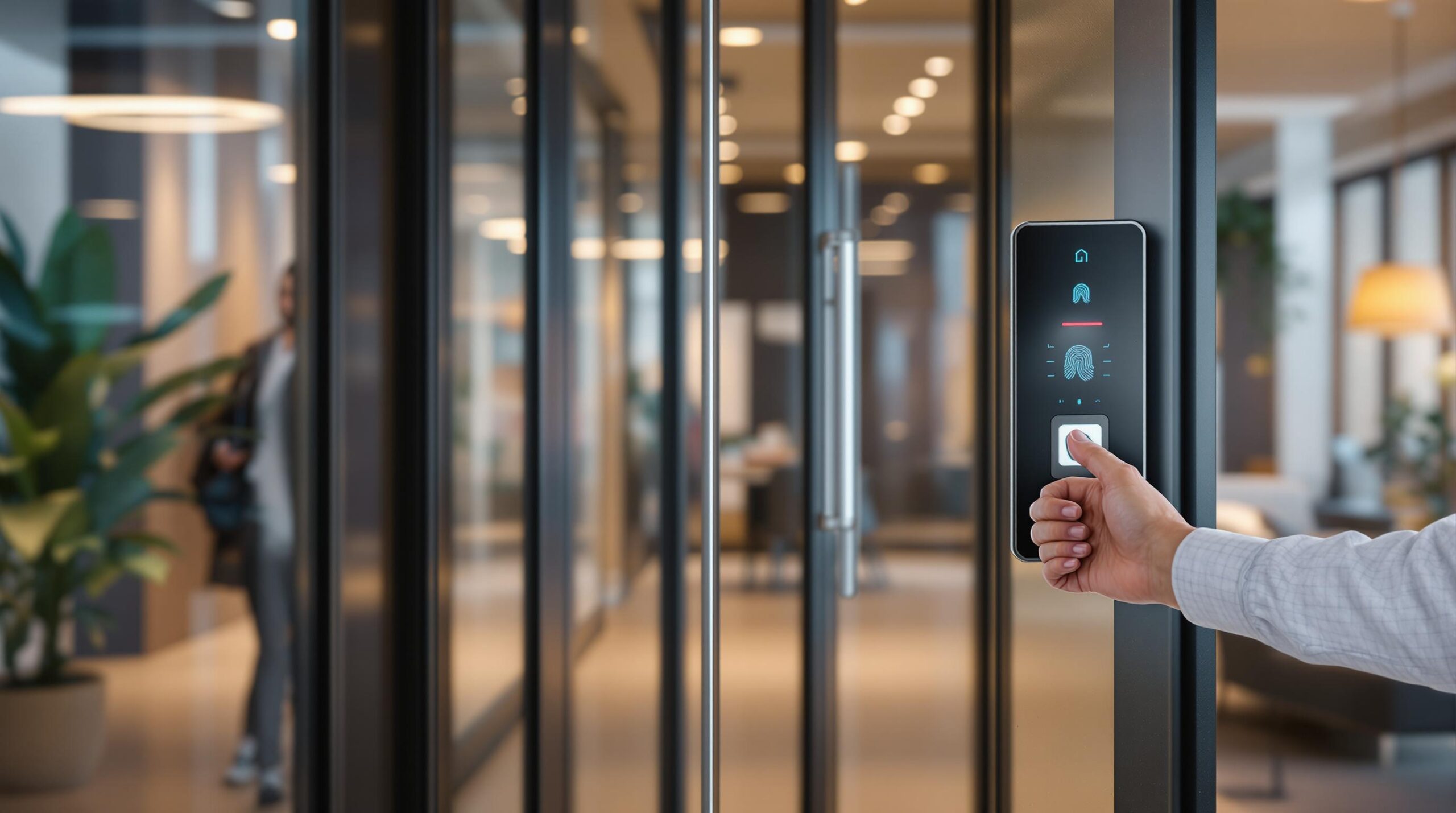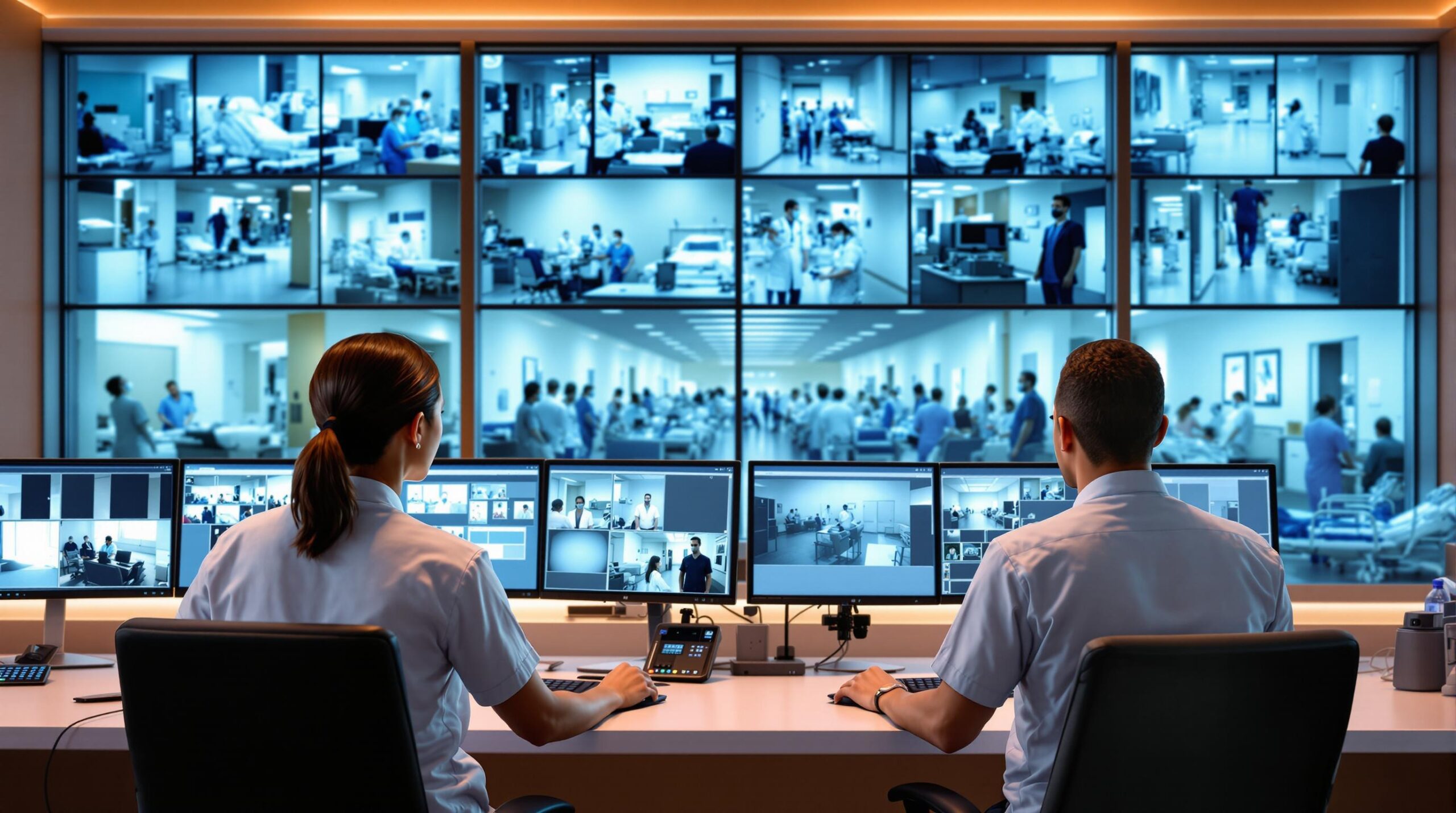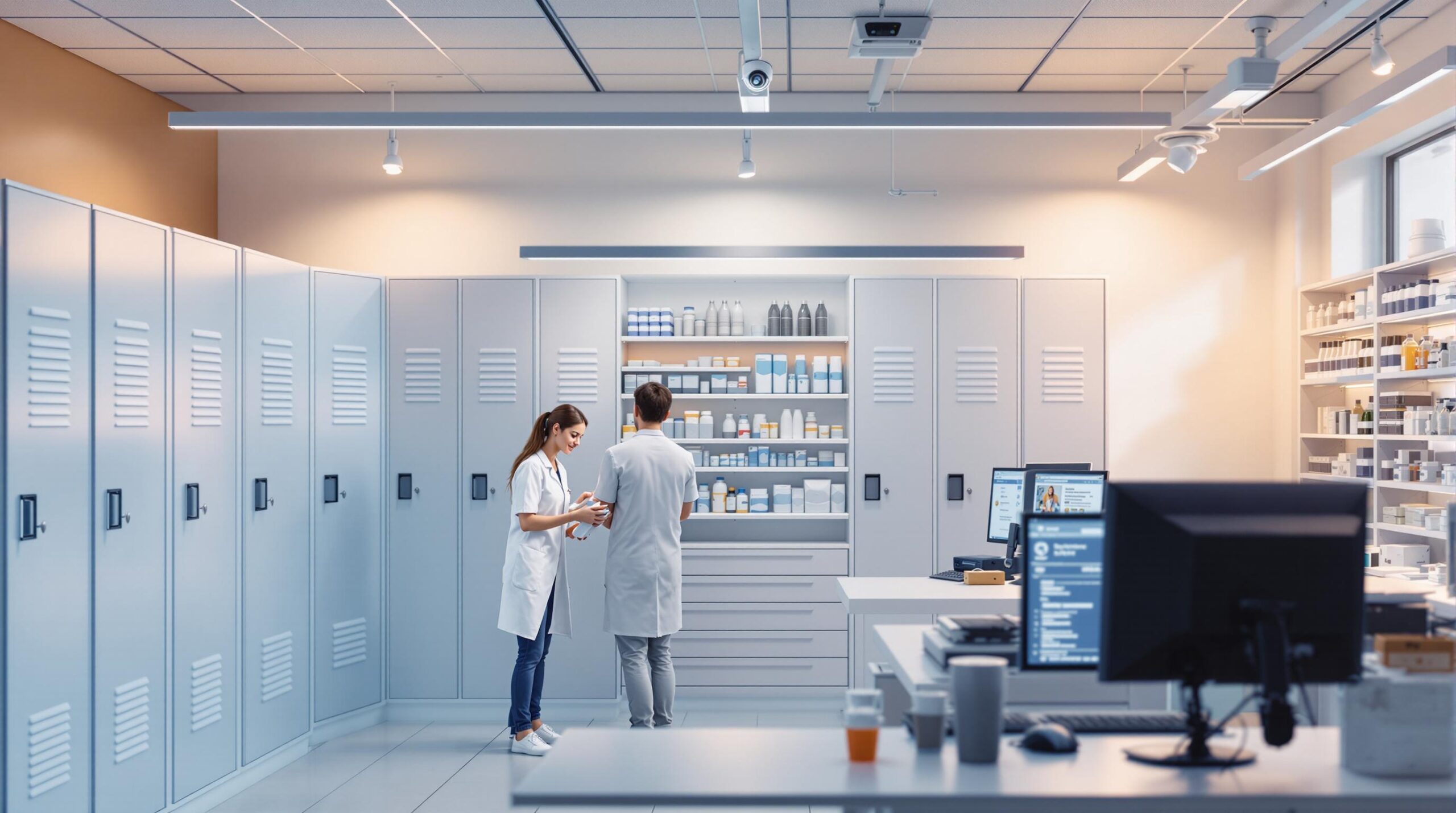Pharmacy security is crucial for protecting medications, patient data, and meeting legal regulations. Here’s what you need to know:
- Key Threats: Break-ins, employee theft, cyberattacks, and compliance failures.
- Physical Security: Use biometric access, CCTV, alarms, and secure storage for controlled substances.
- Digital Security: Implement multi-factor authentication, regular system updates, and staff training to prevent data breaches.
- Compliance: Maintain accurate records, conduct audits, and follow strict handling protocols for medications.
- Staff Training: Teach protocols for security, emergency response, and controlled substance management.
- Transport Safety: Use GPS tracking, tamper-proof seals, and secure documentation for medication transit.
[Webinar] Introduction To The Electronic Security Industry
Physical Security Setup
A strong physical security system is essential for protecting inventory and meeting compliance standards in pharmacy security. By layering multiple defenses, you can safeguard your facility effectively.
Entry Control Methods
Access control systems, such as biometric scanners (fingerprint or retinal), act as the first line of defense by restricting who can enter the facility. Once access points are secured, adding continuous surveillance ensures an additional layer of protection.
CCTV Systems
Modern CCTV surveillance is a key tool for monitoring and securing pharmacies. Placing cameras strategically in critical areas not only helps monitor activity but also discourages criminal behavior.
"Our pharmaceutical security solutions start with a comprehensive assessment of your facility’s specific needs. We offer state-of-the-art CCTV for continuous monitoring, paired with Door Entry Security to control access to sensitive areas." – Amax Fire & Security
When setting up CCTV, consider these factors:
- Round-the-clock monitoring capabilities
- Camera placement at key entry points and sensitive areas
- Integration with access control systems for a coordinated security approach
Security Alerts
An effective alert system is crucial for quickly identifying unauthorised access. Intruder alarms are central to this, immediately notifying on-site security teams and law enforcement in the event of a breach. Regular testing and maintenance ensure the system stays reliable and ready when needed.
Controlled Drug Protection
Effective protection of controlled substances requires more than just basic physical security. By implementing specialised protocols, you can ensure compliance with regulations and safeguard your inventory.
Storage Requirements
Controlled substances should be stored in areas that meet strict regulatory standards. This includes using durable construction materials, secure locking systems, and limiting access to authorised personnel only.
Drug Tracking Systems
Digital tools and advanced verification methods play a key role in monitoring access and maintaining accurate records. Key elements include:
| Component | Purpose | Security Feature |
|---|---|---|
| Digital Access Logs | Track cabinet access events | Biometric verification |
| Inventory Management | Monitor stock and flag issues | Automated alerts |
These systems can be integrated with pharmacy security solutions to provide a multi-layered approach to monitoring and control.
Stock Checks and Records
Adopt these practices to maintain accurate inventory and identify issues promptly:
- Daily Counts: Perform counts at the start and end of each shift. Any discrepancies should be documented immediately and investigated within 24 hours.
- Digital Documentation: Use electronic systems to track dispensing history, monitor stock levels, and maintain a reliable audit trail.
- Regular Audits: Conduct monthly audits to compare physical inventory with digital records, helping to catch discrepancies early.
Combining these measures with advanced monitoring technology creates a strong security framework. This not only protects controlled substances but also supports smooth pharmacy operations.
sbb-itb-6668fe6
Digital Security Measures
In addition to strong physical protections, digital security plays a key role in safeguarding patient data and maintaining operational integrity. Pharmacies today must prioritise digital security to protect their electronic systems and sensitive information.
Multi-Factor Login Systems
Strengthening access controls is an essential first step. Multi-factor authentication (MFA) enhances security by requiring multiple verification methods beyond just passwords. Here’s how different authentication factors stack up:
| Authentication Factor | Security Level | Method |
|---|---|---|
| Biometric Verification | High | Fingerprint or facial recognition |
| Physical Token | Medium | Security key or smart card |
| Knowledge-Based | Basic | PIN or security questions |
Once strong login systems are in place, regular updates and maintenance become crucial to staying ahead of potential threats. These systems should integrate with pharmacy security infrastructure to ensure smooth access control without compromising security.
System Maintenance
Effective digital security doesn’t stop at access controls. Ongoing system maintenance is necessary to address new vulnerabilities. Key practices include:
- Daily Backups: Automating backups ensures data can be recovered if needed.
- Security Patches: Apply updates promptly to fix vulnerabilities.
- System Monitoring: Keep an eye on network activity to detect unusual behavior.
- Access Reviews: Conduct monthly audits to verify user permissions and access levels.
Digital Safety Training
Educating staff is the backbone of any digital security strategy. Training programs should focus on:
1. Recognising Threats
Regular training sessions, including phishing simulations, help employees identify potential cyber threats.
2. Following Protocols
Staff should understand and adhere to security procedures, such as managing passwords and handling sensitive data. This also includes using tools like remote monitoring systems correctly.
3. Responding to Incidents
Clear reporting and response procedures ensure quick action when security issues arise.
When combined with physical security measures, these digital strategies create a well-rounded approach to protecting sensitive data and meeting regulatory standards.
Meeting Safety Standards
Ensuring pharmacy security compliance requires a structured approach. Regular evaluations are essential to uncover vulnerabilities, confirm the effectiveness of current measures, protect assets, and maintain compliance.
Security Assessments
Conducting a thorough security assessment is a key step in pharmacy compliance. Regular evaluations help pinpoint weaknesses and ensure that existing safeguards are functioning as intended. Here are some critical areas to focus on:
| Assessment Area | Key Elements |
|---|---|
| Physical Security | Review access points, locks, and barriers regularly |
| Digital Systems | Keep software updated and monitor access logs |
| Staff Protocols | Check documentation and ensure adherence to established procedures |
| Emergency Response | Test alert systems and review evacuation procedures on a regular basis |
Our integrated security solutions provide protection across these areas. These assessments also set the stage for targeted staff training and secure medication transport protocols.
Required Staff Training
Training your team is crucial for maintaining strong security measures. Every employee should complete role-specific training modules, ensuring they understand their responsibilities. Key training areas include:
-
Basic Security Protocols
Teach all staff how to manage identification verification and access control. Regularly refresh and document this training. -
Emergency Response Procedures
Train employees on how to respond to security breaches and follow evacuation plans effectively. -
Controlled Substance Handling
Provide specialised training for employees handling controlled substances, covering proper storage, accurate record-keeping, and secure handling processes.
Medication Transport Protocols
Secure external logistics are just as important as internal controls. Follow these transport guidelines to enhance safety. Our pharmacy security systems include multiple layers of protection during transit:
- Vehicle Requirements: Use GPS tracking and temperature monitoring systems.
- Documentation: Maintain detailed manifests and custody records.
- Security Features: Use tamper-evident seals and locked containers.
- Route Planning: Pre-approve routes and establish emergency backup plans.
"Our team is well-versed in industry standards and ensures that our solutions always meet or exceed compliance requirements." – Amax Fire & Security
To further strengthen transport security, consider continuous CCTV monitoring and biometric access controls for high-risk shipments. By combining regular assessments, comprehensive training, and robust transport protocols, pharmacies can maintain a secure and compliant operational framework.
Conclusion: Building a Secure Pharmacy
Effective pharmacy security combines physical safeguards, digital defenses, and well-trained staff to create a safe and efficient environment.
Key Takeaways
Here’s a quick breakdown of the main components of pharmacy security:
| Security Component | Features | Benefits |
|---|---|---|
| Physical Security | CCTV, Biometric Access, Alarms | Real-time monitoring, prevents unauthorised entry |
| Digital Protection | Multi-factor Authentication, Updates | Protects sensitive data, ensures compliance |
| Staff Management | Role-specific Training, Access Controls | Reduces errors, strengthens operational security |
| Controlled Substances | Secure Storage, Tracking Systems | Safeguards inventory, meets regulations |
These elements form the foundation of a secure pharmacy operation.
Action Plan
To enhance your pharmacy’s security, consider these steps:
- Perform a detailed security review of your facility.
- Implement advanced monitoring systems.
- Develop and enforce clear security guidelines and training for staff.
- Regularly update and maintain all systems to stay ahead of potential risks.
"Pharmacy security is not just about protection; it’s about enabling smooth operations and maintaining the trust of consumers." – Amax Fire & Security
Keep in mind, security needs change as technology and regulations evolve. By utilising pharmacy security and integrated security solutions, you can protect your staff, inventory, and compliance while fostering a secure environment. Regular evaluations and updates are key to staying ahead.





